Related Research Articles

A telephone switchboard was a device used to connect circuits of telephones to establish telephone calls between users or other switchboards, throughout the 20th century. The switchboard was an essential component of a manual telephone exchange, and was operated by switchboard operators who used electrical cords or switches to establish the connections.
Direct distance dialing (DDD) is a telecommunication service feature in North America by which a caller may, without operator assistance, call any other user outside the local calling area. Direct dialing by subscribers typically requires extra digits to be dialed as prefixes to the directory telephone number of the destination. International Direct Distance Dialing (IDDD) extends the system beyond the geographic boundaries of the North American Numbering Plan (NANP).
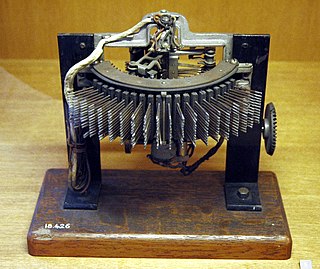
The Strowger switch is the first commercially successful electromechanical stepping switch telephone exchange system. It was developed by the Strowger Automatic Telephone Exchange Company founded in 1891 by Almon Brown Strowger. Because of its operational characteristics, it is also known as a step-by-step (SXS) switch.
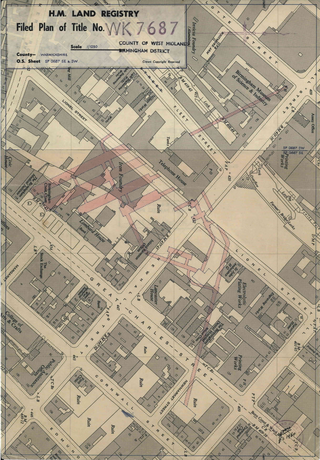
Anchor Exchange was an underground, hardened telephone exchange built in Birmingham, England. Construction commenced in 1953 under the guise of building an underground railway. It opened in September 1957 at a cost of £4 million. It was located nominally on Newhall Street. However its network of tunnels extended from at least the Jewellery Quarter to Southside.
Subscriber trunk dialling (STD), also known as subscriber toll dialing, is a telephone numbering plan feature and telecommunications technology in the United Kingdom and various Commonwealth countries for the dialling of trunk calls by telephone subscribers without the assistance of switchboard operators.
A telephone numbering plan is a type of numbering scheme used in telecommunication to assign telephone numbers to subscriber telephones or other telephony endpoints. Telephone numbers are the addresses of participants in a telephone network, reachable by a system of destination code routing. Telephone numbering plans are defined in each of the administrative regions of the public switched telephone network (PSTN) and in private telephone networks.
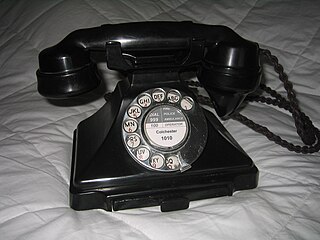
The director telephone system was a development of the Strowger or step-by-step (SXS) switching system used in London and five other large cities in the UK from the 1920s to the 1980s.
A sender was a special type of circuit in 20th-century electromechanical telephone exchanges which registered the telephone numbers dialed by the subscriber, and then transmitted that information to another exchange. In some American exchange designs, for example, the No. 1 Crossbar switch there were both originating senders and terminating senders. The corresponding device in the British director telephone system was called a "director" and, in other contexts, "register".
All-figure dialling was a telephone numbering plan introduced in the United Kingdom starting in 1966 that replaced the traditional system of using initial letters of telephone exchange names as the first part of a telephone number. The change affected subscriber numbers in the cities of Birmingham, Edinburgh, Glasgow, Liverpool, London and Manchester which used the Director telephone system.
In telecommunications, a long-distance call (U.S.) or trunk call is a telephone call made to a location outside a defined local calling area. Long-distance calls are typically charged a higher billing rate than local calls. The term is not necessarily synonymous with placing calls to another telephone area code.

The New Zealand telephone numbering plan describes the allocation of telephone numbers in New Zealand and the Pitcairn Islands.
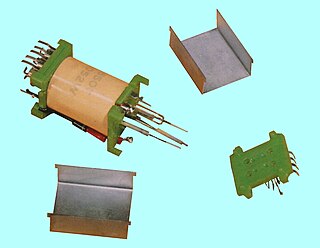
TXE, was a family of telephone exchanges developed by the British General Post Office (GPO), designed to replace the ageing Strowger switches.

PSTN network topology is the switching network topology of a telephone network connected to the public switched telephone network (PSTN).

A telephone exchange, telephone switch, or central office is a telecommunications system used in the public switched telephone network (PSTN) or in large enterprises. It interconnects telephone subscriber lines or virtual circuits of digital systems to establish telephone calls between subscribers.
01708 is the national dialling code for Romford in the United Kingdom. The area it serves includes almost all of the London Borough of Havering and some adjacent areas. When STD codes were first introduced, Romford was assigned 0708 and 0402 was used for the rest of the current code area. After a sequence of changes in the early 1990s, culminating with PhONEday, the current 01708 code became active on 16 April 1995. All subscriber numbers within the area code consist of six digits. The code is used at eight telephone exchanges as part a linked numbering scheme. In common with all other British area codes the initial '0' is a trunk prefix that is not required when dialling Romford from abroad.
Telephone numbers in the United Kingdom have a flexible structure that reflects their historical demands, starting from many independent companies through a nationalised near-monopoly, to a system that supports many different services, including cellular phones, which were not envisaged when the system was first built. Numbers evolved in a piecemeal fashion, with numbers initially allocated on an exchange-by-exchange basis for calls connected by manual operators. Subscriber numbers reflected demand in each area, with single digit telephone numbers in very rural areas and longer numbers in cities.
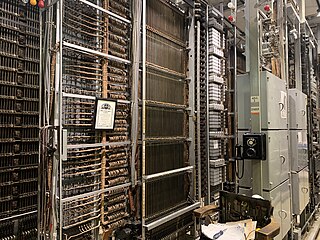
The Panel Machine Switching System is a type of automatic telephone exchange for urban service that was used in the Bell System in the United States for seven decades. The first semi-mechanical types of this design were installed in 1915 in Newark, New Jersey, and the last were retired in the same city in 1983.
01489 is the national dialling code for Hamble Valley in the United Kingdom. Before PhONEday the area code was 0489, with the mnemonic HV 9 where HV are taken from the letters H and V in Hamble Valley – an unofficially recognised geographic area surrounding the River Hamble in Hampshire. The dialling code is rarely ever referred to as Hamble Valley, but is instead referred to as Botley, or less frequently as Bishop's Waltham or Locks Heath. In common with all other British area codes the initial '0' is a trunk prefix that is not required when dialling from abroad.
01527 is the national dialling code for Redditch in the United Kingdom. Before PhONEday the area code was 0527. The mnemonic for 0527 corresponds with LA 7 where LA could have been taken from the letters L and A in Lapworth, a small village in Warwickshire close to Redditch but not served by the 0527 dialling code. The original dialling code for Redditch was 0739, with the mnemonic RE 9 where RE are taken from the letters R and E in Redditch.
01932 is the national dialling code for Weybridge in the United Kingdom. Before PhONEday, the area code was 0932. The mnemonic for 0932 corresponds with WE 2, where "WE" is taken from the letters W and E in Weybridge.
References
- ↑ Barron, D.A. (1959). "Subscriber trunk dialling. The scheme for full automation of the telephone service in the United Kingdom". Proceedings of the IEE - Part B: Electronic and Communication Engineering. 106 (28): 341–360. doi:10.1049/pi-b-2.1959.0268.
- ↑ "- YouTube". YouTube .